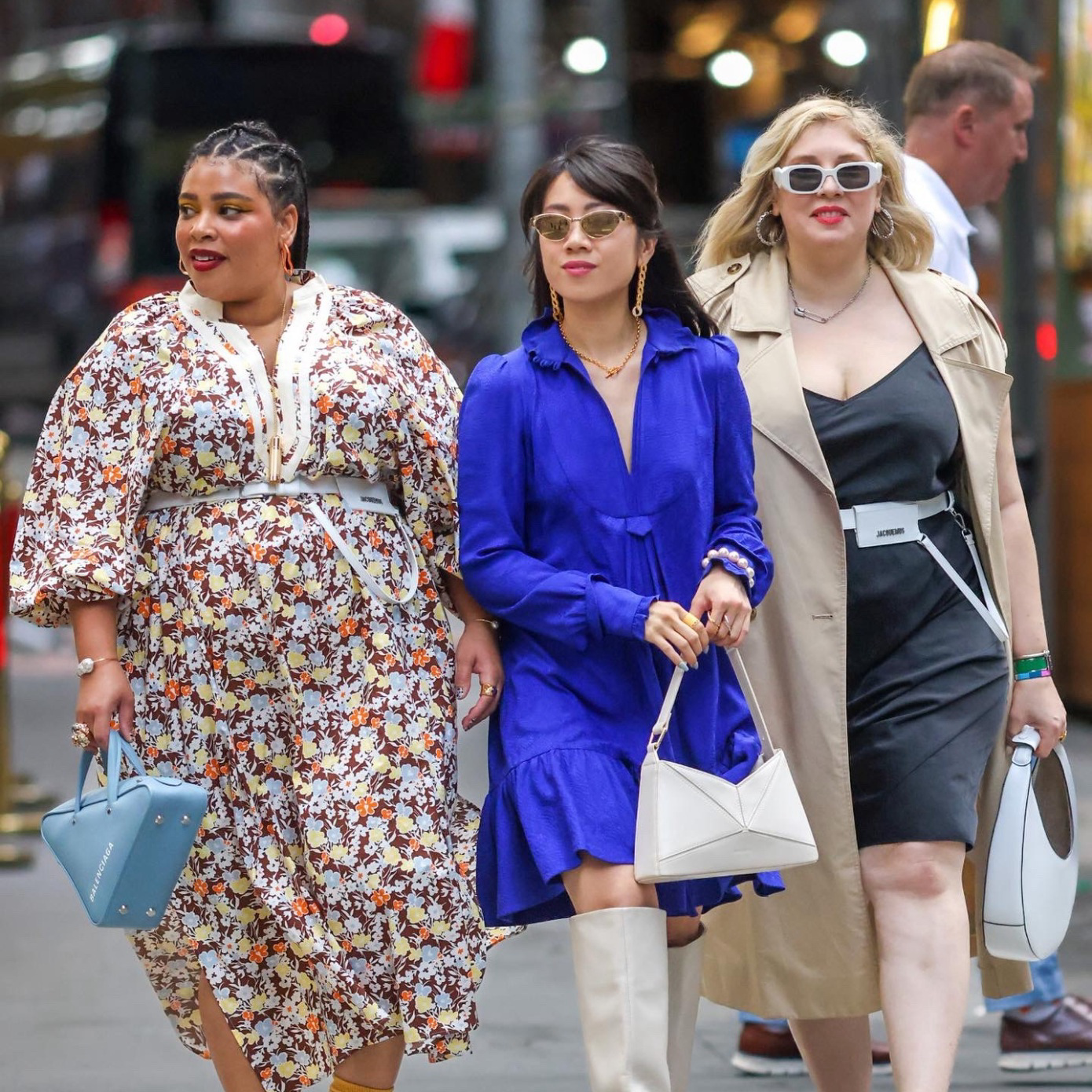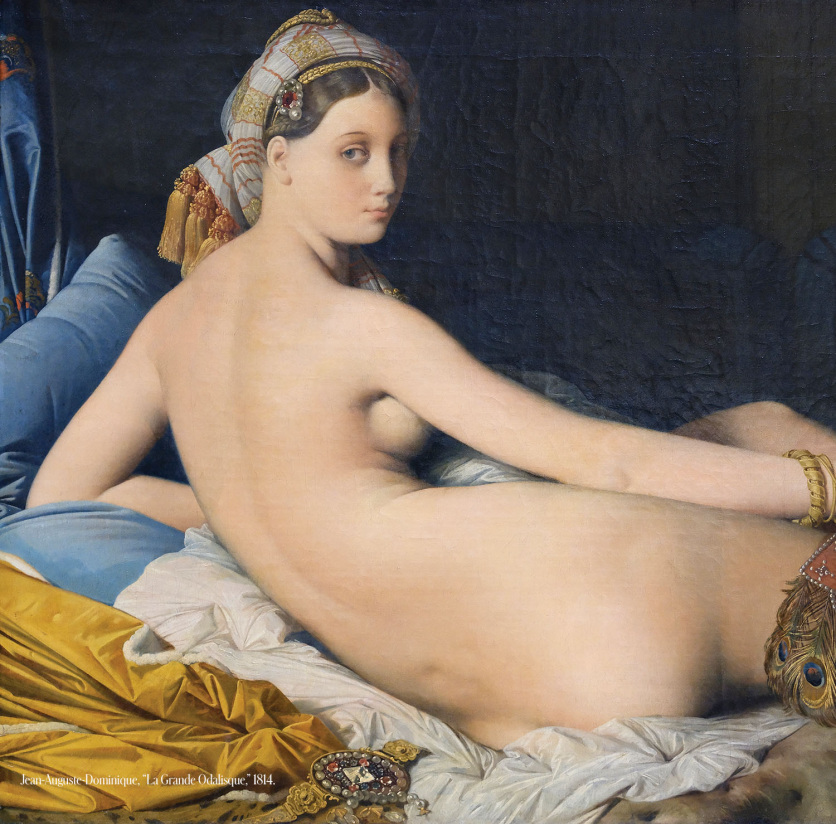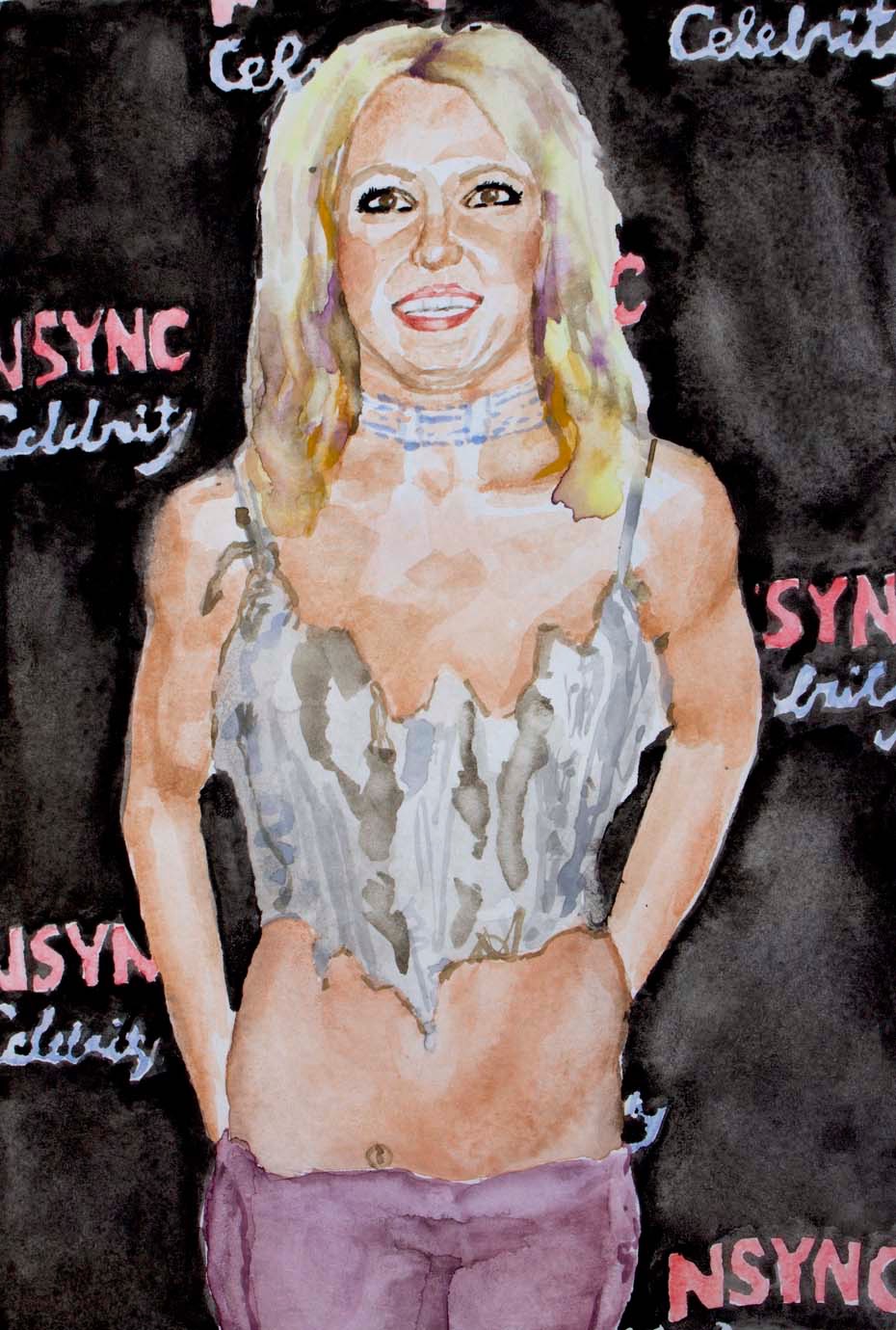
With a taste of your lips
I'm on a ride
You're toxic I'm slippin' under
With a taste of a poison paradise
-"Toxic"
Chris Gartrell: Imagine a chimera of the American soul, the impossible embodiment of our nation’s contradictions. Now imagine the forces at play in this unlikely creature, its dreams and nightmares fueling our lived experience of decay, upheaval and hope amidst the inferno. She moves in tandem with our broken society, a giant whose bare feet sweep us along as she dances half-asleep through the parking lot of our uncertain collective destiny. This being is Britney Spears.
The name of Britney’s second big concert tour, in 2001, was “Dream within a Dream,” which always struck me as intriguing and a little haunting. Even just the thought of being in a dream inside of another dream starts to feel unnerving, like you are so deep inside the unconscious that you might never find a way out. The title of this tour was drawn from Edgar Allen Poe’s 1849 poem “A Dream Within a Dream,” and Britney actually wove Poe’s verses into a dramatic presentation of her songs onstage. Poe’s poem is a disturbing metaphor for the ephemeral and temporary nature of life. His narrator stands on a “surf-tormented shore,” trying desperately to hold onto a fistful of golden sand that slips through his fingers as he concludes, “Is all that we see or seem / But a dream within a dream?”—the very lines that were read over the loudspeaker at the beginning of Britney’s concerts as she and her dancers emerged in goth costumes. It does not take a stretch of the imagination to apply the meaning of this poem to the precarity of the American dream, and of fame and fortune. And how fascinating is it that Britney chose to associate herself with such a dark poetic vision just two years into the peak of her fame?
Speaking of the ephemeral, I think once again of Britney burning down her home gym, this potentially radical action that we addressed in our last article. You and I were also referring back to Ab Fab in our discussion of the fire, thinking of the characters Patsy and Eddie as arsonist agents of late capitalism with their constant shopping, blackout drinking, expensive candles and chain smoking, which literally ends up burning down Eddie’s kitchen in one episode of the show. The theme song for Ab Fab begins with the lyrics “This wheel’s on fire / Rolling down the road,” and I almost can’t imagine a better image to describe our time—but maybe “I burned my gym down with two candles” comes close. (“This Wheel’s on Fire” was originally a boomer burnout anthem written by Bob Dylan and The Band in 1967, reinterpreted for Ab Fab in 1992 by Julie Driscoll.) That said, we want to imagine Britney with a political awareness that Patsy and Eddie lacked, returning to the idea of a deeper intention within her artistic self-presentation.
Phoebe Berglund: If Britney is an artist, then the private gym is not just a place for burning calories and candles; it is her studio. The body is central to her art practice, and the gym is the space where she does her body sculpting. Britney is rarely seen out of a crop top. I think that when she reveals her abdomen, she is showing off her instrument. Even her maternity clothes were bikinis. When she does wear a full-length shirt, she considers it a dress. She has worn negligee as daywear, creating darkness in the daylight. In many ways, she has been a trendsetter for the length of things and, to this day, she obstinately continues to wear low-rise jeans and microshorts in order to—once again—display her full abdomen, the center of both her world and ours. Yvonne Rainer once said, “the mind is a muscle.” Similarly, Britney once posted the Spanish proverb “the belly rules the mind” to her Instagram with the added caption, “Is the belly your heart???” What a profound and provocative question; let us consider what she meant.
The biggest pageantry of the body in contemporary culture has been the annual Victoria’s Secret Angels runway show, which prior to its recent #MeToo scandals around model harassment and exploitation was the most-watched television event of the year, and perhaps the most popular sculpture show of the year as well. I am also thinking about something that Jeff Koons said about Cicciolina, to whom he was married in the early 90s: that as a porn star her artistic tools are her genitals. She not only performed sex but also made her own sets and costumes and was even elected to political office in Italy, founding the Partito dell’Amore (Party of Love) with fellow porn star Moana Pozzi in 1991. It was an entire erotic world she brought us into. (Cicciolina was recently given a lifetime achievement award by Pornhub.com.)
People have always used their bodies to make money, and now more than ever women are killing it with the hyper-capitalized, hyper-sexualized body. Sites like OnlyFans have revolutionized the sex industry. There is still a middle man, but the app takes 20 percent—less than a pimp’s cut. People of all genders use OnlyFans, but women sex workers in particular now have more agency and artistic control than ever before. The Kardashian family, for example, have used their bodies to make billions through sex videos, makeup lines and reality TV. I see the sisters as contemporary fertility symbols. They become pregnant and the belly enlarges, they give birth and then the waistline shrinks and they are back to showing off those American abs. The elasticity of the stomach is incredible. It's like the transformation from winter to spring: everything is cold and barren, then the vulva is plowed and the crops grow, then die, and then it all happens again and again and again. Life is relentless. Women’s bodies operate on the timeline of the seasons. If you want to know the moon cycles, follow the Kardashians on Instagram—the earth rotates around them.
CG: Thinking about midriff-baring fashions, the early 2000s were definitely the time of belly chains, low-rise pants and navel piercings. The waist, or maybe more specifically the extreme lower back and abdomen were on full display. I think of Mariah Carey’s trendsetting decision to wear jeans with the waistband cut off in her “Heartbreaker” video, or Christina Aguilera’s Dirrty-era looks, which involved bikinis worn under low-rise assless chaps. Red carpet conversations in the new millennium revolved around the question, how low can you go?
Britney was one of the first big stars to get a lower back tattoo, or “tramp stamp”—hers is of a fairy—and the list of people who followed this trend is a who’s who of 2003: Xtina, Lindsay Lohan, Jessica Alba, Christina Milian, Nicole Ritchie. Britney also has two tattoos on her lower bikini line: a Chinese character inside of a flower on one side, and a cross on the other. (Britney was apparently told that the Chinese symbol she chose meant “mysterious,” but the translation is actually closer to “strange.”) She may have been inspired by Janet Jackson, who infamously discussed her tattoos and piercings in several interviews leading up to this time, including one on The Oprah Winfrey Show in 1997. (Oprah was shocked by Janet’s explanation of the erotic quality of a nipple piercing.) In addition to a tribal scorpion motif on her lower back, Janet has a tattoo on her lower abs of Mickey and Minnie Mouse having oral sex. The stakes for proclaiming one’s sexuality in pop, and inscribing that on the body, were already high by the time Britney came onto the scene.
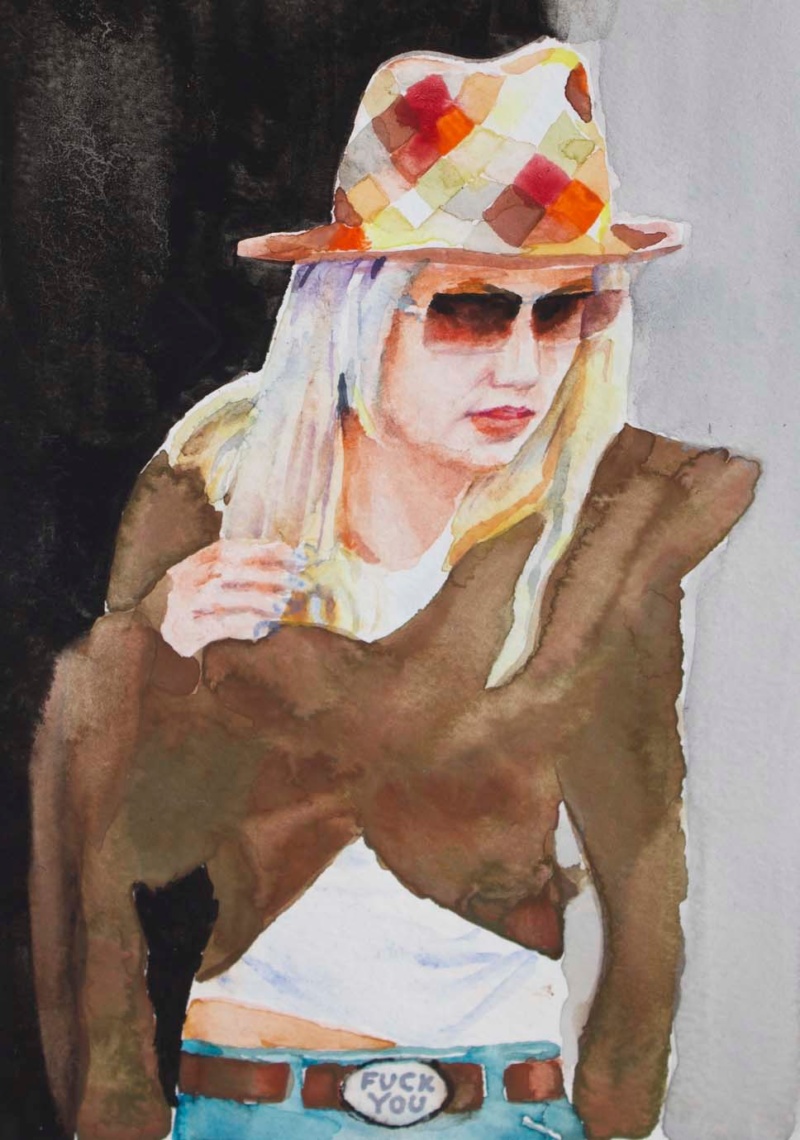
One could almost imagine a chapter on low-rise pants and tramp stamps sneaking into an updated edition of Roland Barthes’s Mythologies, with its musings on how meaning is constructed around objects, experiences and fashion in the modern consumer sphere. (Barthes’ work already includes a chapter entitled “Striptease,” which ironically discusses how revealing not too much of the body is key to a Parisian stripper’s performance of objectified desire.) Britney was loaded with meaning and myth as an American libidinal object from day one, and the layers (and tattoos) accumulated as her narrative progressed.
PB: In order to further interrogate the codes of Britney’s body and her sexuality, I want to consider the sculpture she is creating and look back on some of her early works. Britney has an athletic, compact build. I imagine her body as an ideal for women in the American military: strong enough to land a man in a choke hold and have him begging for mercy, but agile enough to perform gymnastic backflips through daisy fields, and with feminine curves that signal fertility to prospective sexual partners. And what kind of body does Britney desire? Her current boyfriend, Sam Asghari, fits the mold of a Las Vegas Chippendales dancer: 12 pack abs and 12 years younger than her.
Back to her philosophical statement that “the belly rules the mind.” In the works of Britney, her body is sending us constellations of complex thoughts. In Britney’s songs we are enveloped in her heavy-breathing whispers, which are entrancing, but if you listen closely she will take you on a deeper journey into the mind and heart. To think of her songs as being only about sex is to miss the message. Much of the sex talk is actually a critique of political economy, less about relationships between people and more about relationships among things.
I interpret the song “Toxic,” from the 2003 album In the Zone, to refer to the toxicity of aspirational wealth. The lyrics are commodity fetishism 101. The man that Britney says she’s addicted to is not a man, but a symbol of the capitalist structure. The “poison paradise” she speaks of is the landscape of American consumer culture. She gets a taste, she’s intoxicated and she slips into the void. In the music video she is naked, wearing only a diamond-studded sheer bodysuit. Diamonds are objects without any actual value, save for the arbitrary value placed on them by humans. The mesh around her naked body was all that Britney wore: she was dressed as a jewel in a matrix of diamonds. And in the 2000s, there was an escalation of the commodification of the female body, with women increasingly in the state of becoming the object. Toxic!
My favorite Britney song is 2016’s “Slumber Party,” mostly because I love slumber parties and I used to have them almost every weekend in high school. Me and all of my friends would jump into bed together, drink screwdrivers, smoke Marlboro Lights, listen to music, dance in our underwear and braid each other's hair all night long. It was so fun, we were ecstatic to have free time together without adults. In Britney’s song, she tells a very sexy and poetic tale about a slumber party with pillow fights, sheets strewn on the floor like oceans, chandeliers, candles, candy lotion and 7 minutes in heaven. But she also describes sleepless nights, toiling away making music and videos, making herself crazy and working her body to the point of exhaustion without sleep. Sleep is in competition with capitalism’s demands on our time, as described so eloquently by the CEO of Netflix, Reed Hastings, when, in 2017, he said that “we’re competing with sleep.” Britney’s slumber party is actually a masochistic track that revels in the bittersweet ecstasy of working 24/7. No doubt driven by the Protestant work ethic, so prevalent and oppressive in American culture, working 80-hour weeks, in fact, leaves most people with very little money and no healthcare or education.
CG: I’m thinking again about the Twin Peaks analogy I brought up in our last article, and there’s something about Britney that meshes with a lot of the ideas that David Lynch weaves into that show, like how perilous America can be for women, the murder of Laura Palmer being the inciting incident in the series. Your description of “Toxic” as a narrative about having a taste of wealth and luxury, and slipping into the void, makes me think of the perfume counter at Horne’s Department Store in Twin Peaks. This counter is essentially a portal through which young women tumble from the “good” reality into the “bad” within the context of shopping for luxury goods: Through the Looking Glass reimagined as small-town sex trafficking. The world on the other side is one of nighttime, drug deals and prostitution, the epicenter of which is the brothel/casino One Eyed Jack’s, which represents a very “Slumber Party” aesthetic with its silks, cushions and nightmarish implications. Laura Palmer tumbles through this salacious portal and winds up dead.
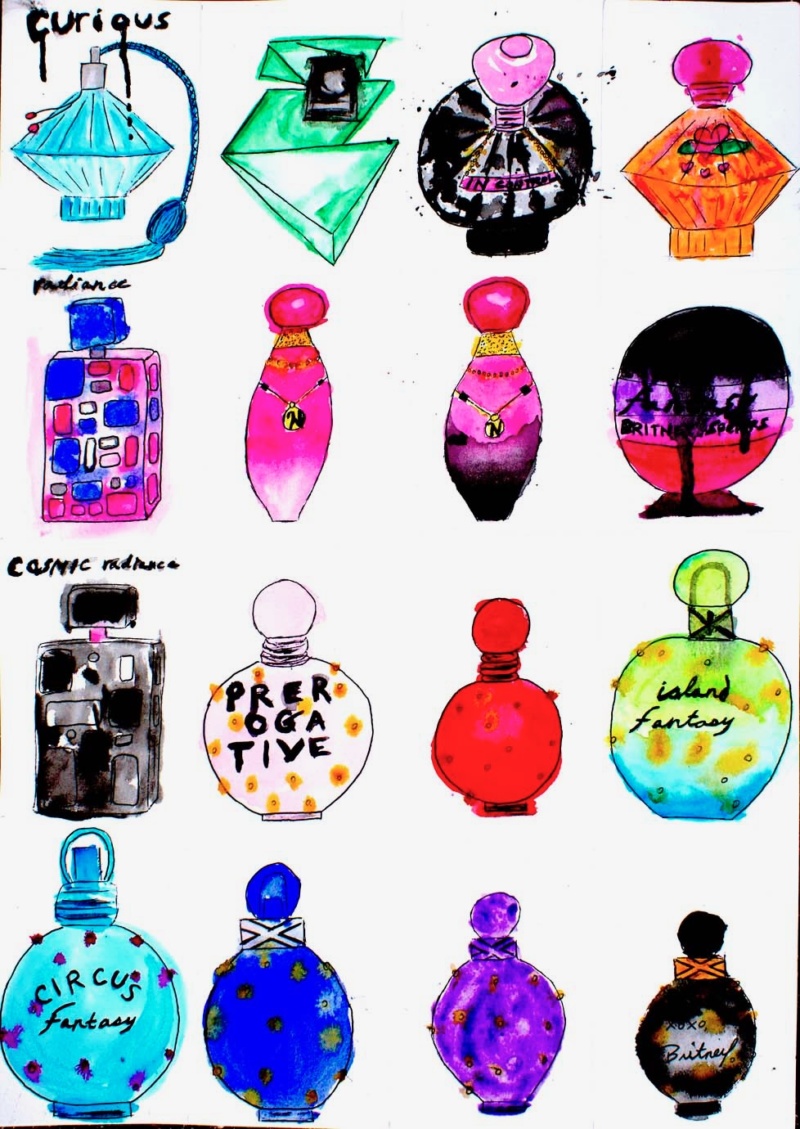
The interesting thing about Laura Palmer is that we learn she was living a double life, and that she secretly enjoyed being “bad” at the same time everyone in Twin Peaks imagined her as “good.” The common perception of Britney as someone whose innocence was “lost” is also very Laura Palmer. They both embody the timelessly misogynistic archetype of a “fallen woman” in a uniquely American mold. Moreover, the fact that Britney is a perfume mogul, alongside the image of a deadly vial in the “Toxic” video, constructs an almost too-perfect parallel with the perils of the perfume counter in Twin Peaks. The product placement of Britney’s perfumes in her videos would become a trademark from this point on.
The Britney narrative, at least early on in her career, was so much about the innocent (or maybe “not that innocent”) girl next door, who famously said that she was practicing celibacy until marriage, at the same time as she was photographed on the cover of Rolling Stone, at age 17, in lingerie and curled up with a Teletubby doll. This not-a-girl, not-yet-a-woman tension is obviously unfair and impossible to maintain given that it inevitably reveals a sexual/scandalous adult self. Justin Timberlake leveraged this tension and capitalized on Britney’s fame as he built an entire solo career around their 2002 breakup, broadcasting his assertion that she cheated on him (see “Cry Me a River”) along with other details about their sex life.
You can see the slippery slope unfold for Britney, her identity slipping through her fingers, as she is interrogated about her personal life during interviews in the aftermath of the JT years. Tears were often close to the surface during this time, which she described as “weird.” She cries on camera on several notable occasions from 2003–06. By age 26, Britney was a twice-divorced tabloid staple, shamed for driving with her infant son in her lap, wearing pajamas in public, and exposing her genitals while exiting a car, commando in a minidress. This ballooned into a cycle of gleeful (and classist) media descriptions of how Britney was revealing her authentic, trailer-trash self. Her good-girl image had been obliterated well before the moment she notoriously yelled at a reporter to “eat it, lick it, snort it, fuck it,” while exiting a disastrous custody hearing for her two children in 2007. A lot of people thought Britney might die as she spiraled into recklessness and substance abuse that year. In the words of Janis Joplin: freedom’s just another word for nothing left to lose.
PB: “Eat it, lick it, snort it, fuck it.” This is a poem. She is painting a picture of penetration through every orifice of the body and with such few words. She is insistent on simultaneous, maximal consumption and destruction. As listeners to this recital, we are left to imagine what objects she alludes to. Perhaps all of the objects that are available in the shopping mall or the courtroom. The body/object relation is abject, this is effective communication. In the context of the courtroom, there is no legal language that accounts for human feelings. After being silenced, Britney exits the courthouse and reclaims the power of her voice through the utterance of obscenities in lyrical form At this moment, I believe, she was asking, who is obscene in this situation, me or the state? What are the moral standards that I am being held up to? Are my words any more obscene than this American life?
CG: Britney has lost everything in court: her custody rights, the ability to leave her own home, drive a car, see whom she pleases. Perhaps an even more terrifying portal than the Twin Peaks perfume counter, the courtroom has plunged her into disenfranchisement and house arrest. Britney’s makeup artist recently claimed that her conservatorship even controls her body, with “Handmaid’s Tale-type things” in place to prevent her from bearing any more children. Now that Amy Coney Barrett, who served as a handmaid in the conservative Christian group People of Praise is serving as a Supreme Court justice, the comparison to Margaret Atwood’s dystopian novel becomes ever more chilling. If the American court system is increasingly a bastion of far-right, white supremacist ideology, how many of us stand to lose even more than Britney? Eat it, snort it, lick it, fuck it, indeed.
PB: Back to Twin Peaks, the analogy we keep returning to because we both grew up in the Pacific Northwest and we are familiar with the damp earth and the darkness that lurks within the landscape and the people. The violent, cold rugged coastlines are wild and terrifying. The forests are dark and full of moss, ferns and mushrooms that hold ancient secrets and contemporary melodramas. Thinking of the darkness brings me to the character Bob, a man that has haunted me for too long with his freakish grimace, gangly body and shaggy unruly mane. When Bob appears in the mirror, it is like when Britney looks in the mirror and we see ourselves, we see America. It is chilling. We are looking at the dark side of the self, the dark side of each and every one of us.
CG: And Bob murdered Laura! But in the end, he was actually a menacing spirit who possessed people, an unsettling force sensed in the forest at night. That feeling was present growing up in the Pacific Northwest, as you mentioned. One of my earliest memories is being shown a video in kindergarten about how to survive when lost in the woods. In the video, a little boy was separated from his parents on a camping trip and he ran around and around under a dense canopy of trees as the sun set, crying and alone, the camera spiraling in panic. He slept outside and foraged for berries before he was eventually found. That video haunted me throughout my childhood.
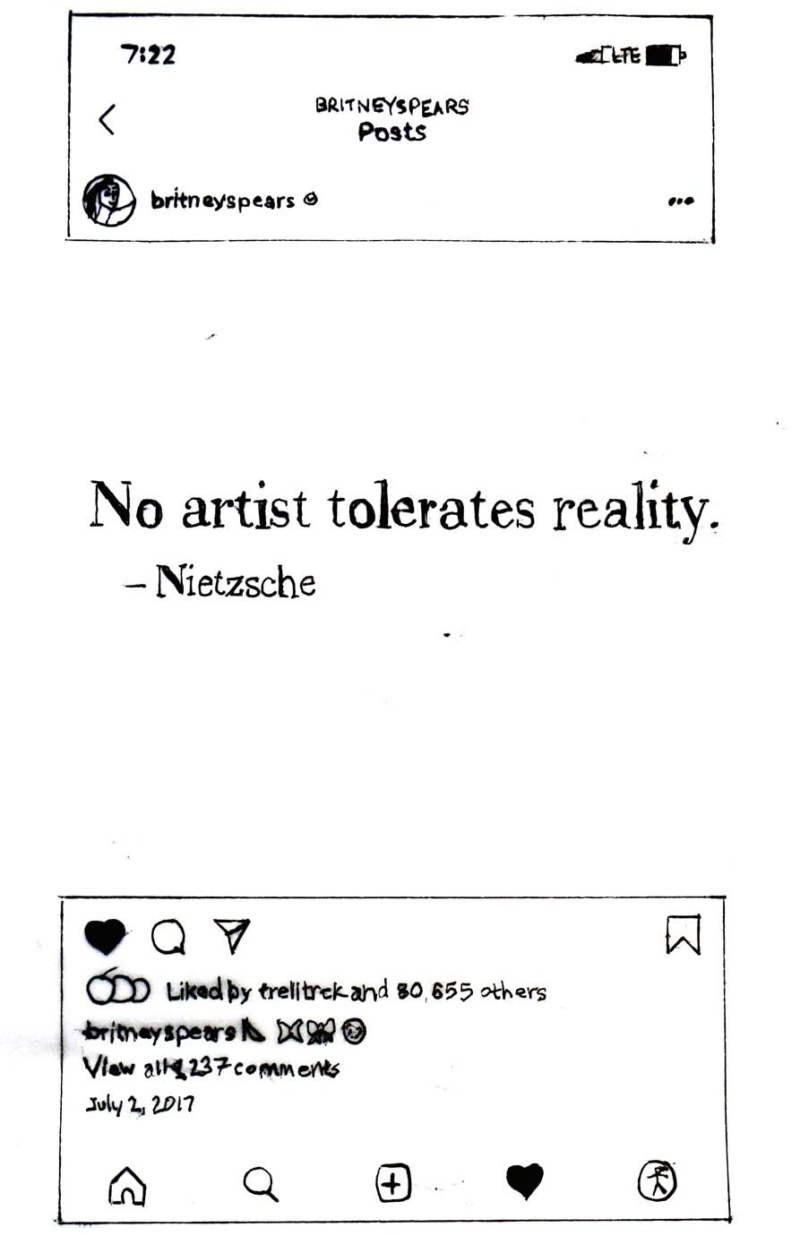
In Twin Peaks, the forest is portrayed as the site of ancient forces in the form of the Black Lodge, which can destroy a person if they enter it with fear—the opposite of the White Lodge, a place of overwhelming good. It is worth mentioning that David Lynch’s interpolation of Native American culture could be seen as somewhat problematic, with the figure of Deputy Hawk connecting the Bob spirit to his tribe’s folklore in ways that echo stereotypes about indigenous mythology. The concept of the spectral native and the terrifying, “irrational” other have been elements in the white American imagination for centuries. Nevertheless, Hawk’s words are resonant here, speaking about how in the Black Lodge, “you will meet your own shadow self… [but] if you confront [this place] with imperfect courage, it will utterly annihilate your soul.”
At its core, Twin Peaks is about mining the darkness beneath the surface of American life, exploring how subtle the manifestations of that can be, even as it’s ever-present and located in each of us. Britney articulated a similar vision in 2008, stating that the “worst part” of the world exists in duality with the “best part.” Moreover, in 2003, philosophizing during a backseat interview, she pondered, “all this stuff goes away,” gesturing to her hair and her clothes, “and then it’s just yourself and your soul that you have to deal with.” She has been to her own version of the Black Lodge and confronted annihilation, and one of the reasons why we are drawn to her is that she contains unsettling truths which might otherwise remain hidden. She is America’s Erebus, our child of chaos and deity of the dark.
PB: How do we find a way out of the chaos of the American soul, our collective Black Lodge? As the COVID-19 pandemic rages on unfettered in our nation, which is undeniably broken and polarized, we are witnessing unprecedented extremes of darkness and light. Yes, the election of Joe Biden brought a profound sense of relief to many, and yet a renewed sheen of inclusivity and compassion may end up being cold comfort in the absence of radical change from the neoliberal order. Darkness still looms. As Britney dances in her garden, twirling over and over in the sun, is she sending us a coded message? Is her idiosyncratic movement a ritual, an intervention? Using her body, does she conjure a tiny utopia within the walls of her estate, a #FreeBritney zone within the darkness of her legal circumstances? Britney once posted the Nietzsche quote “No artist tolerates reality” to her Instagram. She also brings to mind another line of his, from Thus Spoke Zarathustra: “One must have chaos in the soul to give birth to a dancing star.” Perhaps our deity of the dark, this sugar plum fairy leading us through the forest in a cloud of perfume, holds the key to unlocking the light.
Read part one of Mouth2Mouth's Spear's analysis here.


